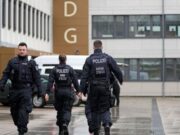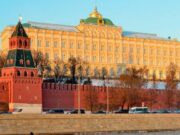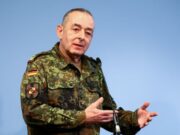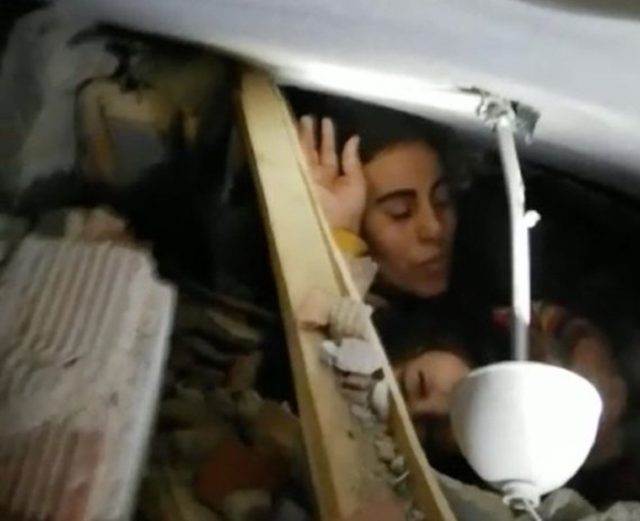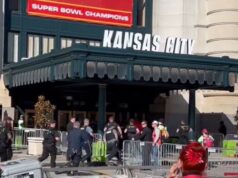At least 35 people were killed and 1,607 others were injured after a massive earthquake with a magnitude of 6.8 rocked the eastern Turkish province of Elazığ Friday evening.
According to Turkey’s Disaster and Emergency Management Authority (AFAD), 17 people were killed and 654 people were injured in Elazığ, the hardest-hit province. Four people were killed and 226 people were injured in neighboring Malatya province with the main damage occurring in the Doğanyol district. Dozens of others were also wounded in southern and southeastern provinces of Adıyaman, Kahramanmaraş, Diyarbakır, Şanlıurfa and Batman.
The number of survivors later reached 45, according to Turkey’s Disaster and Emergency Management Authority (AFAD). The latest person who was rescued was 65-year-old Ayşe Yıldız, who was pulled from the rubble in Elazığ’s Mustafa Paşa neighborhood 19 hours after the earthquake.
In one of the most encouraging developments of the day, a woman named “Azize” was pulled out from rubble in Elazığ’s Mustafapaşa neighborhood 17 hours after the earthquake.
https://youtu.be/B-VKjQHVeb0
The woman was contacted by a member of the National Medical Search Team (UMKE) through her cellphone and instructed both in Turkish and Kurdish to keep herself and others around calm. The conversation was broadcast live on air, and Azize’s rescue sparked a wave of joy and relief throughout the country.
Miraç Dişli, a 12-year-old boy who was rescued 11 hours after the earthquake, later died in the hospital. The Turkish Red Crescent said in a tweet that Dişli had volunteered for a project last year.
https://www.youtube.com/watch?v=RqiGaJmcA-M
Dişli’s 6-months pregnant mother and father, who were also pulled from the rubble 12 hours after the tremor, are currently receiving treatment.
AFAD said that 18 people were killed and 654 people were injured in Elazığ, the hardest-hit province. Four people were killed and 226 people were injured in the neighboring Malatya province with the main damage occurring in the Doğanyol district. Dozens of others were also wounded in southern and southeastern provinces of Adıyaman, Kahramanmaraş, Diyarbakır, Şanlıurfa and Batman. Soylu said a prison in Adıyaman province, which was damaged in the earthquake, will be evacuated.
Along with Soylu, Health Minister Fahrettin Koca and the Minister of Environment and Urban Development Murat Kurum arrived in the province late Friday to help coordinate rescue and relief efforts. Koca earlier said that 1,031 people have been brought to hospitals with various injuries. Some 137 patients continue to receive treatment but none remain in critical condition, he added.
https://youtu.be/CpjB24Bb0Xc
https://youtu.be/RqiGaJmcA-M
The quake struck Sivrice district at 8:55 p.m. (1755 GMT) at a depth of 6.7 kilometers, according to AFAD. Sivrice, a town with a population of about 4,000 people, is situated south of the Elazığ city center on the shores of Lake Hazar. The lake is one of the most popular tourist spots in the region and the source of the Tigris River. It is home to a “Sunken City,” with archaeological traces dating back 4,000 years in its waters.
Soon after the initial quake, the province was shaken further by at least 401 aftershocks with at least 13 above magnitude 4, with the highest being an aftershock of magnitude 5.4.
The earthquake caused panic among residents of major cities of Diyarbakır, Şanlıurfa and Adıyaman. No major damages were reported from the region. According to initial reports, the earthquake was felt in provinces as far as southern Adana and northern Samsun, along with northern Syria and Iraq. Local media in Lebanon said the cities of Beirut and Tripoli also felt the quake, along with similar reports from Israel.
President Recep Tayyip Erdoğan said the government is taking all steps to provide aid and assistance to people affected by the quake, which caused widespread fear. “We stand by our people,” Erdoğan said Friday on Twitter.
The president canceled his scheduled attendance at the 33rd general assembly and award ceremony of Turkey’s Foreign Economic Relations Board (DEIK) at Lütfi Kırdar International Convention and Exhibition Center in Istanbul for Saturday.
Erdoğan later arrived in Elazığ, where he attended the funeral of a mother and son who lost their lives in the earthquake. He later visited areas where collapsed buildings are located, along with hospitals that admitted individuals injured in the earthquake.
“170 additional ambulances have been dispatched to Elazığ and Malatya provinces. Air ambulances are also ready to help the affected,” Koca stated earlier on Friday. The search and rescue operations are continuing and the death toll could rise, said Koca. Soylu said the injured were transferred to hospitals and facilities have been opened to serve those who have been affected.
Five buildings in Sivrice and 25 in Doğanyol district were destroyed, said Kurum. He also cautioned residents not to go into damaged buildings.
National Defense Minister Hulusi Akar said the army was ready to step into action if need be.
Soon after the quake, officials from throughout Turkey announced hundreds of trucks carrying humanitarian aid, including food, medicine, blankets and tents were dispatched to Elazığ and neighboring provinces. Thousands of search and rescue crews, as well as medical personnel, were also sent to the area.
AFAD announced that 3,699 search and rescue personnel and 554 vehicles have been dispatched to Elazığ, along with 108 NGO personnel and volunteers.
Some 250 technical personnel are working for damage assessment mainly in Malatya and Elazığ provinces, the agency said, adding that 81 buildings were found to be heavily damaged and 53 partially damaged, in addition to 30 buildings that collapsed.
Communication companies announced free telephone and internet services for residents in the quake-hit region, while Turkish Airlines announced extra flights.
Apart from brief electricity cuts, no major infrastructure damages have been reported in the aftermath of the earthquake. The greatest challenge for locals is harsh winter conditions in the region, where temperatures plunge as low as -8 degrees Celsius during the night. Emergency staff and people waiting at the scene lit fires on the streets to stay warm in freezing temperatures. Sports centers, schools and guest houses were opened to accommodate quake victims in Malatya.
Turkey is among the world’s most seismically active countries as it is situated on several active fault lines, and dozens of minor earthquakes and aftershocks occur daily.
The earthquake in Elazığ was triggered by the deadly East Anatolian fault line, stretching some 650 kilometers from eastern Turkey’s highlands to the Mediterranean, from where it turns southwards and meets the northern end of the Great Rift system separating African and Arabian plates. The strike-slip fault was formed millions of years ago as the Anatolian plate was being pushed northwestwards by the Arabian plate.
Experts noted that the line has mainly been silent after producing a series of devastating earthquakes recorded in the 16th and 19th centuries. However, major earthquakes with a significant intensity often occur in the region. In 2010, Elazığ province was hit by a magnitude 6 earthquake, killing a total of 51 people in the villages of the Karakoçan district. Some 350 kilometers to the east in 2011, an earthquake struck the eastern city of Van and the town of Erciş, some 100 kilometers to the north, killing at least 523 people.
Professor Haluk Özener, the head of Boğaziçi University’s Kandilli Observatory and Earthquake Research Institute, said Friday that a 40-kilometer section of the fault line is believed to have ruptured with aftershocks stretching to a 75-kilometer radius. The fault line is now expected to produce major earthquakes to the southwest.
The most potentially devastating fault line in the country is the North Anatolian fault line (NAF), where the Anatolian and Eurasian plates meet. The NAF has also produced devastating earthquakes throughout history.
More than 17,000 people were killed and over 43,000 were injured when a magnitude 7.4 quake rocked the Marmara region for 37 seconds in the early hours of Aug. 17, 1999, with its epicenter located in Gölcük province, some 75 kilometers southeast of the Bosporus. Three months later, on Nov. 12, 1999, 845 people were killed and nearly 5,000 injured when a magnitude 7.0 earthquake hit Düzce province, about 120 kilometers northeast of Gölcük.
In September, a 5.8-magnitude earthquake in the Marmara Sea shook Istanbul and sent panic across the city, injuring 34 and damaging 473 buildings./dailysabah







